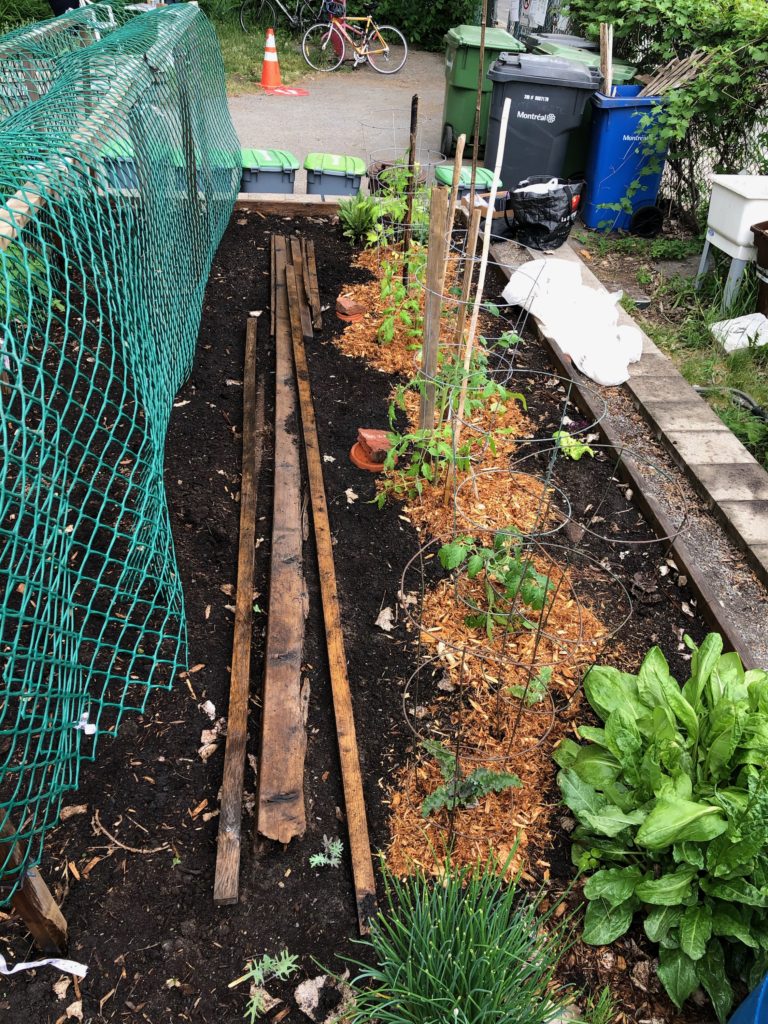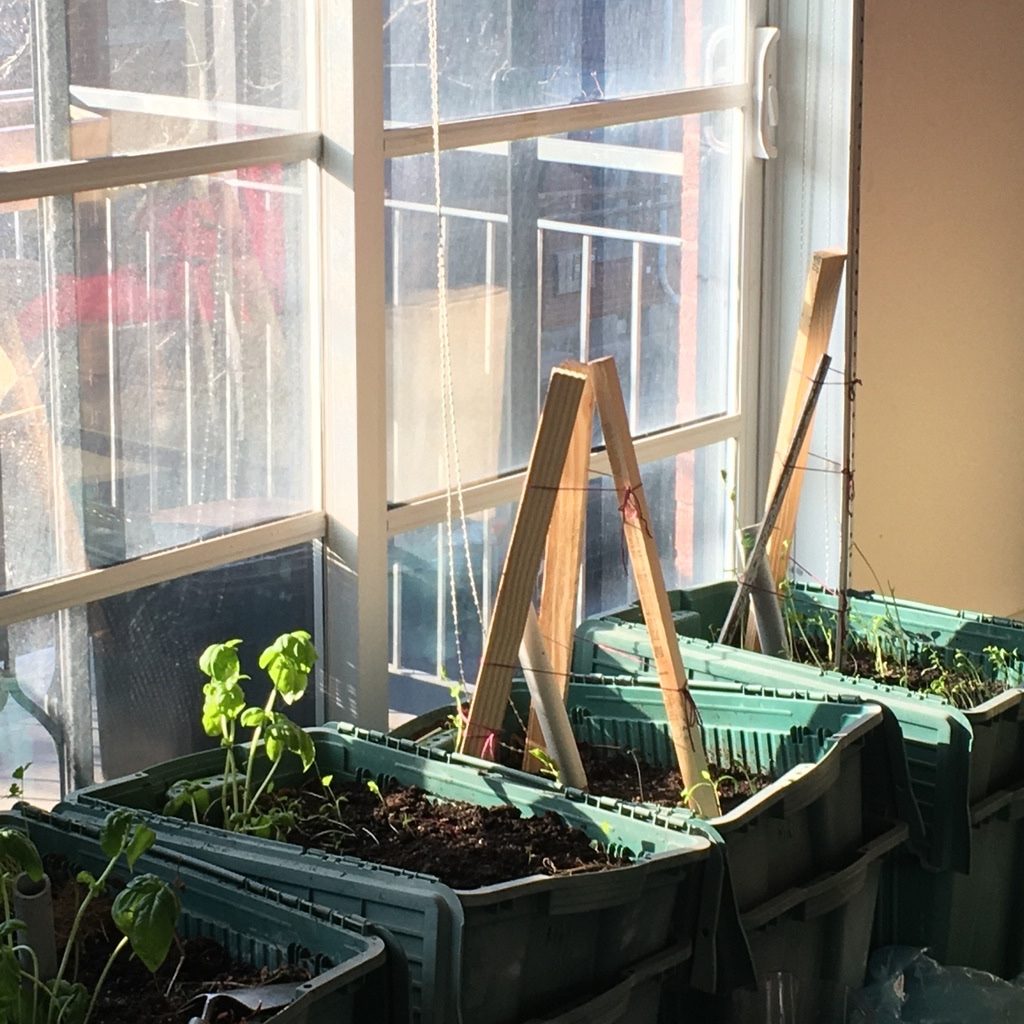The need for urban agriculture being championed by Montreal Mayor Valérie Plante and Premier François Legault means more people will be growing plants and gardens at home this year. Even now that community gardens have opened with special rules in place (it was iffy for a while there), nurseries, farms and garden centres are having a hard time keeping up with seed, soil and seedling orders.
But this isn’t the first time that citizens have been encouraged to grow their own fruits and vegetables during hard times. “Victory Gardens” hearken back to World War One and Two when people were pushed to be as self-sufficient as possible and to garden as a way of boosting morale and supporting the war effort.
We have a different enemy now, but the fight could still benefit from some more tomatoes.
A few fun facts about victory gardens:
Most new Victory Gardeners were men! It was more about having your neighbours seeing you being patriotic than it was about feeding your family.
Victory Gardening was a city thing. The Government figured people in rural areas already knew how to garden.
In 1943, the Nova Scotia Department of Agriculture published a pamphlet called Gardening for Vim and Vitamins.
Relief Gardens, which came about during the Great Depression, between the wars, was more about people not going hungry. For those, unemployed men. From The Canadian Encyclopedia again: “In 1943, public land in Toronto cultivated for victory gardening accounted for only 50 per cent of that tilled for relief gardening, while in Québec City it made up 25 per cent. Like victory gardens, relief gardens were both practical and symbolic. By giving unemployed workers a sense of purpose, relief gardens boosted spirits while mitigating food shortages. The fear of going hungry, however, was more potent during the Great Depression than the Second World War, perhaps accounting for the greater prominence of community gardening during the 1930s.”
Back in 1917, food scarcity was a real concern. In this day and age, even if we run out of eggs at the grocery store for a week, they’ll be back. The idea of any longterm disappearance of basic foods seems unlikely. And even if there were no eggs, there’d still be egg replacer, pasteurized egg whites and plenty of chicken, vegan mock chick’n, lentils, beans, beef, fish, seafood, tempeh, tofu, etc. We don’t lack for options. For goodness sake, we can’t eat enough potatoes and I imagine we’ll have some good deals on lobster this year, since so much of it is usually exported, and at prices that Canadians won’t want to pay, so the whole supply chain could take a hit price-wise.


The Montreal Gazette’s T’Cha Dunlevy recently published a story about gardening, about how to start and why it’s going to be popular this year. But there’s a political and economic side to this drive for urban agriculture. At my own community garden, despite waiting lists, no new people will be allowed this year. The strict garden rules originally included having access to the garden once on either even or odd days of the month according to your garden plot number, whereas most people would usually go at whatever hours they wished. That’s now been updated and we can go any day we wish when the garden is open. At a senior’s community garden in Cote-St-Luc, however, gardeners can only go once a week, and there’s no access to a washroom, despite having to pay the full fee. One gardener told me they’d have to start wearing diapers to the garden.
They also said they’d have to downsize what they plan on growing. They won’t be eating their garden produce all winter this year.
The saddest part of social distancing and gardening is that so much knowledge is passed on from gardener to gardener. When I had my first plot in the Rose-de-Lima garden in St-Henri years ago, I didn’t even know how to prepare my soil. An older man who presumably spoke some language, but didn’t speak a word to me, picked up a spading fork and started stomping down on it to push it deep into the soil, then rotate it as he pulled up, to loosen and aerate the soil. He started at one end of the 10’x10′ plot and kept going down the edge. When he got to the end, he moved away from the edge and dug up another line. I got another spading fork from the tool shed and joined him. We met in the middle. To this day I have no idea what that man’s name is or what language(s) he speaks. But I always think of him in May when I work fresh soil and compost into my plot.
Another neighbouring Bangladeshi gardener showed me what to do with the tall stalks of amaranth that had grown from seeds that had blown into my garden plot. You’re not allowed to let the amaranth grow over a certain height, specifically so the seed doesn’t spread to other gardens, but I harvested the plant, peeled the stem and cooked the insides of it like zucchini and the iron-rich leaves like spinach. That was another conversation that certainly didn’t happen in French, English or Bengali.
Now, a city worker or a volunteer from our garden has to sit for 3-hour shifts in a parasol-shaded chair at the garden entrance to make sure we all wash our hands. I’m not allowed to garden when my plot neighbours are present. We have to garden alone. One of my former neighbours got in a fight with the worker and a garden board member because he came with his wife and kids. He was allowed to come with his kids, but not his wife.
Despite the Botanical Gardens being closed and having so many limitations, the City is still doing its best to encourage gardening, whether it’s a balcony planter box or a backyard vegetable patch. Cultive Montreal is a festival happening online that will includes talks and info on online seedling ordering and delivery throughout the month of June. The Botanical Gardens are offering digital gardening capsules for beginners and amateurs like me, on everything from garden design to how to balconies.
And despite the social distancing in my garden, there’s hope for education and social connection. My friend a few plots over left me a couple extra kale seedlings he’d started in his home. His seedling setup is much more impressive than my few self-watering containers, but he’ll reap the harvest.
Leave a Reply